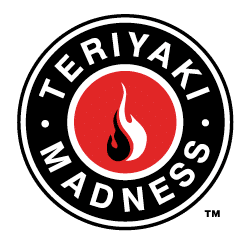Franchise Restaurant Costs to Expect
 Investing in a franchise restaurant can be a lucrative opportunity, but it requires careful financial planning. Understanding the costs associated with starting and running a franchise is crucial for setting realistic expectations and ensuring long-term success.
Investing in a franchise restaurant can be a lucrative opportunity, but it requires careful financial planning. Understanding the costs associated with starting and running a franchise is crucial for setting realistic expectations and ensuring long-term success.
Explore the franchise restaurant costs you should account for when opening your franchise location, including initial start-up expenses and ongoing fees.
Typical Cost Range for Opening a Franchise Restaurant
The cost to open a franchise restaurant varies widely depending on the brand, location, and size of the restaurant. On average, you can expect to invest between $250,000 and $2 million to get your franchise up and running. Some smaller or kiosk-style franchises may be on the lower end, while larger, sit-down establishments or high-profile brands can exceed this range.
The franchise fee is one of the first costs you’ll encounter. This fee, which falls between $20,000 and $50,000, is paid upfront when you sign the franchise agreement. It gives you the right to operate under the brand name, access proprietary systems, and receive initial training and ongoing support. Once you’ve secured your franchise rights, one of the most significant expenses will be real estate and construction. These costs can range from $100,000 to over $1 million, depending on your location and the size of your restaurant. Real estate expenses include leasing or purchasing a property, while construction costs cover renovations and buildouts to meet the franchisor’s specifications. These payments occur over several months as you finalize your location and prepare it for operation.
Outfitting your restaurant with the necessary equipment and furniture is another major investment. Commercial kitchen equipment, such as ovens, fryers, and refrigeration units, combined with furnishings like tables and chairs, can cost between $50,000 and $300,000. These expenses are typically incurred during the buildout phase, prior to opening. Additionally, you’ll need to budget for your first inventory purchase, which can range from $10,000 to $50,000, depending on the type and scale of your restaurant. Inventory costs cover the food, beverages, and supplies required to serve your initial customers.
Training expenses are another early cost, often totaling $5,000 to $20,000. Many franchisors provide comprehensive training programs for owners and their teams, which may require travel and accommodations. These training programs are essential for understanding the franchisor’s operational standards and ensuring a smooth launch. Marketing efforts in the lead-up to your grand opening are equally important. A typical budget for grand opening promotions ranges from $10,000 to $30,000 and includes local advertising, promotional events, and materials to generate community excitement.
Ongoing Costs to Consider
Beyond these initial investments, it’s crucial to plan for ongoing costs that will sustain your business. Monthly royalty fees, which typically range from 4% to 8% of gross sales, are a common expense and allow you to continue using the franchisor’s name and systems. Marketing fees, usually between 1% and 4% of gross sales and paid monthly, contribute to the franchisor’s national or regional advertising efforts, which help maintain brand visibility.
Operating your franchise restaurant will also require a steady investment in inventory, supplies, and staff. Monthly inventory expenses often range from $5,000 to $20,000, while staffing costs vary based on the size of your team and your location’s labor market. These costs include wages, payroll taxes, and any employee benefits you offer. Regular maintenance and repairs, while variable in cost, are another consideration. Keeping your equipment and facilities in good condition is essential for maintaining operational efficiency and meeting health and safety standards.
In addition to these recurring costs, it’s wise to have working capital on hand to cover unexpected expenses or shortfalls during the early months of operation. Many franchisees allocate $20,000 to $100,000 for working capital to ensure they can navigate initial challenges without financial strain.
The timing of these expenses is equally important to understand. Initial costs, such as the franchise fee, real estate, construction, equipment, training, and inventory, are typically incurred during the pre-opening phase, which can last six months to a year. Ongoing costs, including royalties, marketing fees, staffing, and inventory replenishment, begin once your restaurant is operational and are often tied to your revenue.
Planning for Financial Success with Teriyaki Madness
Investing in a franchise restaurant is a significant financial commitment. To ensure success:
- Create a detailed business plan and proforma: Include projections for all initial and ongoing expenses.
- Explore financing options: Consider SBA loans, franchisor-specific financing, or other funding sources to cover upfront costs.
- Work closely with the franchisor: Leverage their experience to accurately estimate costs and optimize operations.
Franchising with Teriyaki Madness can be an excellent way to navigate the financial and operational complexities of opening a restaurant, thanks to our well-structured support system and proven business model. From the initial investment to ongoing operations, Teriyaki Madness provides guidance and resources to help franchisees succeed.
To learn more about becoming a Teriyaki Madness franchise owner, download our franchise report.

